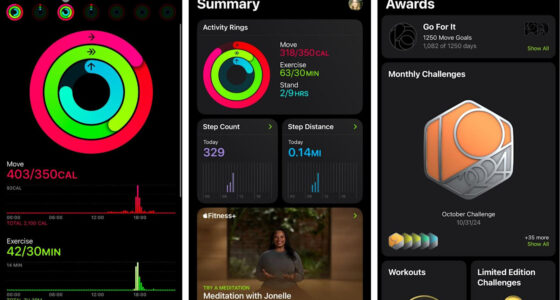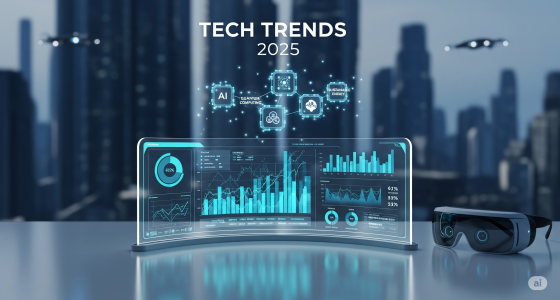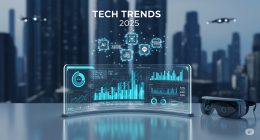The Evolution of Wearable Technology
From Fitness Trackers to Multifunctional Devices
Wearable technology has transformed from basic fitness trackers to sophisticated devices like smart rings and glasses, integrating health monitoring, computing, and entertainment functionalities. By 2025, the global wearables market is projected to surpass $100 billion, driven by innovations in form factors and consumer demand for seamless, stylish tech. Smart rings and glasses are emerging as game-changers, offering discreet designs and advanced features that cater to diverse lifestyles, from fitness enthusiasts to professionals seeking productivity tools.
Smart Rings: Discreet and Powerful
Blending Style with Health and Convenience
Smart rings, such as the Oura Ring 4 and Samsung Galaxy Ring, are gaining traction for their minimalist design and robust capabilities. These devices track heart rate, sleep quality, and activity levels using sensors like photoplethysmogram (PPM) and SpO2, providing detailed wellness insights without the bulk of smartwatches. Some, like the K Ring, enable contactless payments, while others offer notification alerts and smart home control. Their sleek, jewelry-like appearance appeals to professionals and style-conscious users, making them a marketing focal point for brands emphasizing fashion and function.
Smart Glasses: Redefining Interaction
Augmented Reality Meets Everyday Use
Smart glasses, such as the Ray-Ban Meta and Xreal One Pro, are poised to revolutionize how users interact with digital information. These devices offer augmented reality (AR) overlays for navigation, productivity, and entertainment, with features like high-resolution displays and hands-free communication. Unlike bulky VR headsets, modern smart glasses prioritize lightweight, stylish designs, making them suitable for daily wear. Marketing strategies highlight their practicality, targeting tech enthusiasts, gamers, and professionals who value immersive experiences without sacrificing aesthetics.
AI and Personalization Drive Engagement
Tailoring Experiences to Individual Needs
Artificial intelligence (AI) is a cornerstone of wearable tech marketing, enabling personalized health insights, predictive analytics, and adaptive user interfaces. Smart rings use AI to deliver tailored fitness plans, while glasses like the Even Realities G1 provide real-time notifications and translations. Companies are leveraging AI-driven campaigns to showcase how wearables adapt to user habits, appealing to consumers who prioritize customization. In China, compliance with data security laws adds an ethical dimension to marketing, emphasizing user trust.
Competitive Landscape and Brand Strategies
Innovation as a Market Differentiator
Established players like Apple, Samsung, and Huawei dominate 66% of smart wearables sales, but new entrants are carving niches through innovation. Brands like Ultrahuman and Amazfit market subscription-free smart rings, such as the Helio Ring at $199, to attract budget-conscious consumers. Marketing campaigns focus on seamless ecosystem integration, as seen with Samsung’s Galaxy Ring pairing with Android devices. To compete, companies emphasize unique features like eco-friendly designs and advanced sensors, targeting health-conscious and eco-aware audiences.
The Future of Wearable Tech Marketing
Convergence of Fashion, Tech, and Sustainability
As wearables evolve, marketing strategies are shifting toward immersive storytelling and user-centric experiences. The projected $50 billion wearables market by 2029 underscores the potential for smart rings and glasses to capture new segments. Brands are investing in AR-driven campaigns and partnerships with telecom giants like AT&T and Verizon to boost visibility. Sustainability, with energy-efficient materials and minimalist designs, is also a key selling point, appealing to eco-conscious buyers. The future lies in positioning wearables as indispensable lifestyle companions, blending tech, fashion, and wellness seamlessly.









